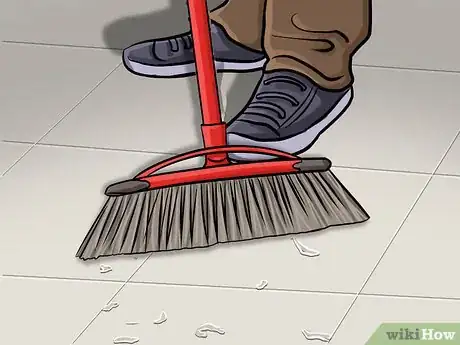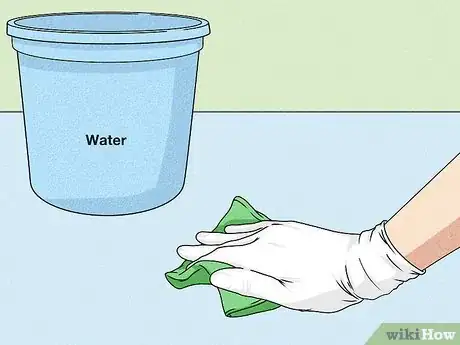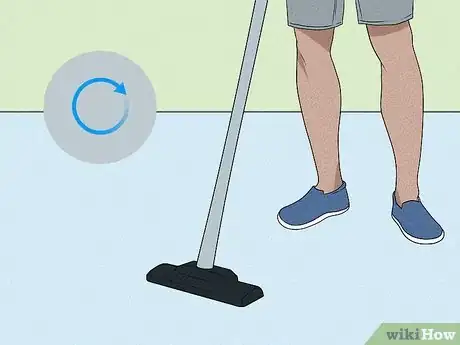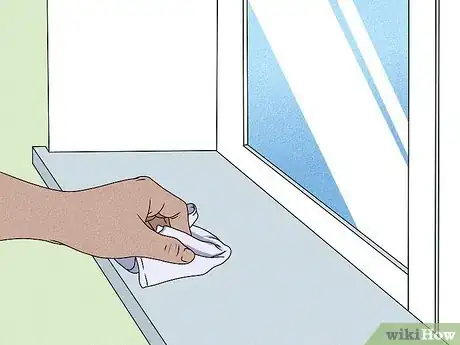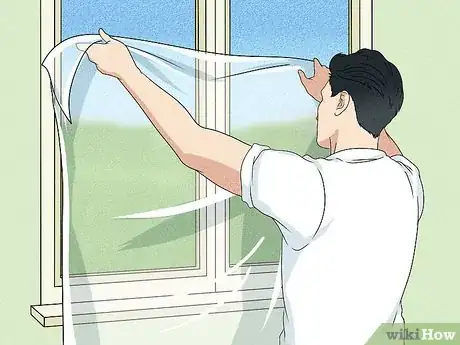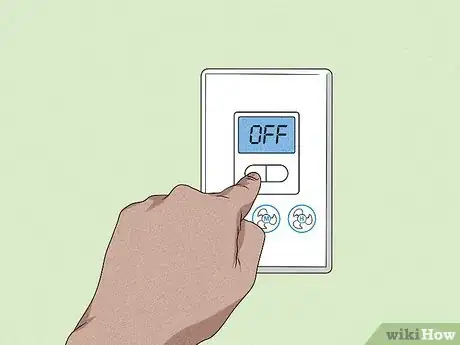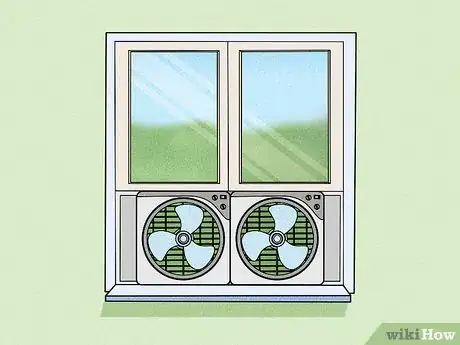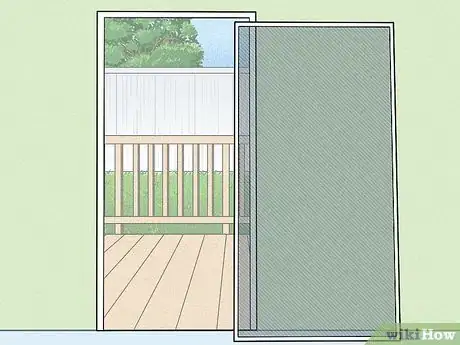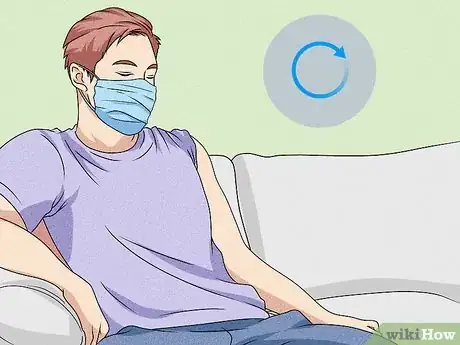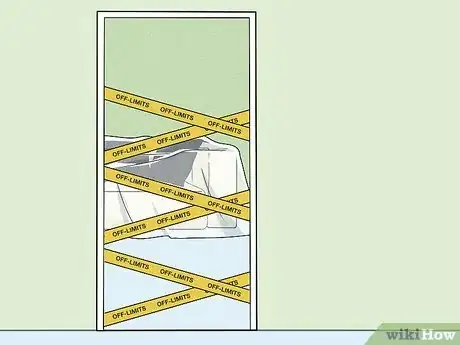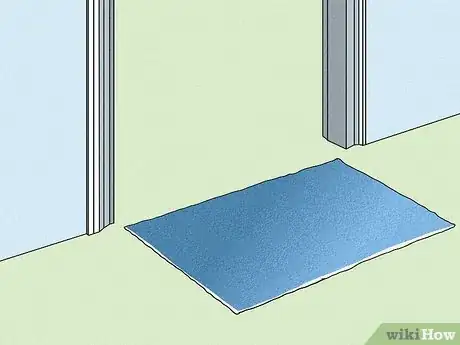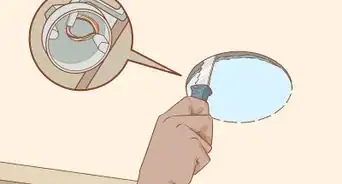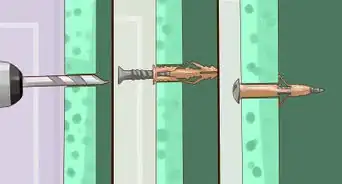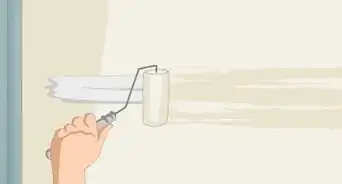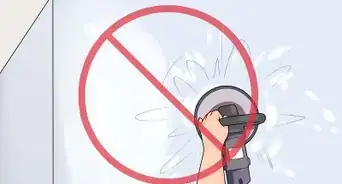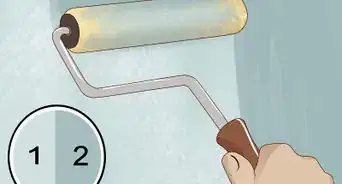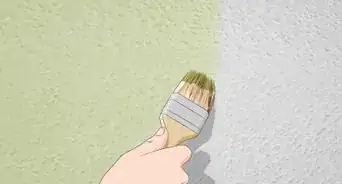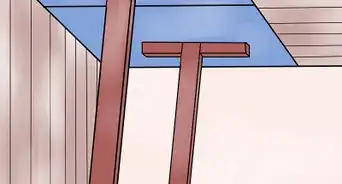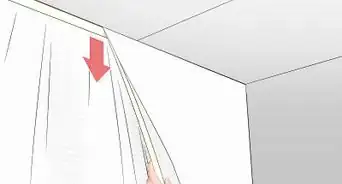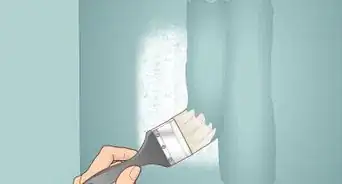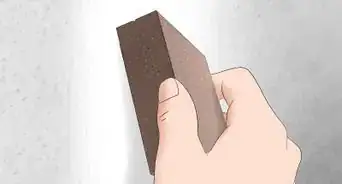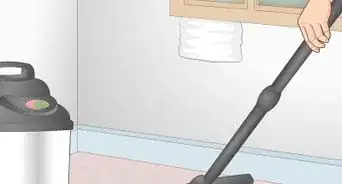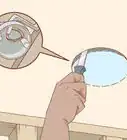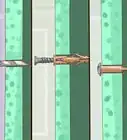This article was co-authored by Raymond Chiu. Raymond Chiu is the Director of Operations for MaidSailors.com, a residential and commercial cleaning service based in New York City that provides home and office cleaning services at affordable prices. He has a Bachelors in Business Administration and Management from Baruch College.
wikiHow marks an article as reader-approved once it receives enough positive feedback. In this case, several readers have written to tell us that this article was helpful to them, earning it our reader-approved status.
This article has been viewed 284,801 times.
Drywall is used to form the inside walls of buildings and houses. It requires sanding, which results in a large amount of dust. Demolition of old drywall also generates a considerable amount. Drywall dust is very fine and pervasive, with a consistency close to powder. Because of this, it can quickly and easily spread throughout your home. You’ll need to be vigilant to prevent this, starting with preventative measures before the job begins.
Steps
Cleaning Up Drywall Dust
-
1Sweep first.[1] Start from the exterior and work your way to the center of the room. Take your time and sweep with gentle strokes to avoid stirring up the dust more than you have to. Use a dustpan to scoop up the dust pile and place it in a trash bag.[2] Tie the bag up immediately to seal the dust in. If you are working with a significant amount of dusk, there are products you can buy that will help the dust cling to the floor. This will make it easier to sweep up.
- You can buy sweeping compound products at any home improvement store. They are usually sold in bags or buckets. The compound itself has a dust/sawdust-like consistency.
- To use, shake the compound over the floor where you want to sweep. It holds the dust down to the floor so that you can sweep it up more easily.
- Many of the products require 24 hours to settle over the dust before you can sweep it, so read the instructions carefully.
-
2Vacuum the floors.[3] The most effective vacuum for this job is a wet/dry vacuum, also known as a Shopvac.[4] If you don’t own one already, many home improvement stores rent them out. Use vacuum bags that are made specifically for collecting dry wall dust. For the finer particles, use a HEPA filter.
- The filters can get clogged so, if possible, use a filter that can be washed and reused.
- It’s also wise to have a back-up filter on hand, just in case.
- Use a hose attachment to get into hard-to-reach areas where drywall dust could collect.[5]
Advertisement -
3Wipe everything down with a damp microfiber cloth.[6] Fill a bucket with cool water. Dip the cloth in the water and wring it out well – a soaking wet cloth can damage fresh drywall. Start at the top of the walls and work your way down. You’ll need to rinse and wring out the cloth often.[7]
- Change the water in the bucket as soon as it gets cloudy.
- After the walls, wipe down every horizontal surface in the room. This includes baseboards, light fixtures, outlet covers, etc.[8]
-
4Vacuum a second time. Insert a brush attachment for the second pass. Brush attachments help to get in the nooks and crannies. It also has a hose attached that will allow you to vacuum the walls. Start at the top and vacuum your way down to the bottom.
- After the walls, vacuum the floor again.
- You’ll will probably need to vacuum in the corners of the room and over the joints twice.
-
5Spot clean with a damp microfiber cloth. Check the room and wipe up any lingering dust that you see. Run the cloth over the baseboards and window ledges one more time. If you want to be extra vigilant, damp mop the floor as a final step.[9]
- Make sure you’re using clean water in the bucket, even for the final wipe down.
Preparing the Area
-
1Block off all vents and openings with plastic sheeting.[10] Heavy-duty plastic sheeting helps to minimize how much dust gets dispersed through the air. Cover all the openings throughout your home, such as doorways and windows, with it. For best results, hang the sheeting from floor to ceiling.
- Cover all of the air vents and ductwork.
- Secure the plastic sheeting with masking tape.
-
2Cover the floor and protect the furniture.[11] Move as much furniture out of the way as you can. Cover what can’t be moved with plastic sheeting, especially upholstered furniture, since the dust can work itself into the fabric. Secure the sheeting in place with bungee cords.[12]
- Place plastic sheeting over the entire floor of your work area.
- If you have carpet in the rest of the house, consider covering the floors in every room with self-adhesive plastic lining.
-
3Turn off the central heat and air circulation.[13] Leaving the system on will result in drywall dust getting into it, which will then spread throughout your home. Even though you’re covering all of the air ducts with plastic sheeting before you begin, it is still beneficial to turn off the circulation system.
- Be sure to leave the circulation system off until you’ve completed your task and cleaned up the dust afterward.
- Check your system’s air filter frequently in the weeks following the sanding. You will probably need to replace it soon after.[14]
-
4Place box fans in the windows.[15] Using box fans will help keep the room you are working in ventilated. Open the windows and place the box fans in them.[16] Be sure to position the box fans so that air blows out of the room, not into it. Use plastic sheeting to seal off the area around the fans and window frames. Duct tape the plastic in place.[17]
- If any of the windows have air conditioning units in them, remove them from the room. They get clogged with dust easily.
- Use the box fans on a low setting, which will cause the least air disturbance. Setting them on high will suck out a lot of the dust, but it will also increase the amount that’s moving through the air.
-
5Remove the door and window screens.[18] This will allow the dust to move freely from inside to outside. It also improves the air circulation in the area. Not removing the screens will trap a lot of the dust in the room. You’ll also have to remove drywall dust from the screens after you’ve finished sanding.
-
6Wear gloves and a face mask. Put on a face mask that covers your nose and mouth so you don't breathe in any of the drywall dust. Put on work gloves to prevent dust from sticking on your hands while you're cleaning.[19]
- Do not remove your face mask during cleaning. Breathing in drywall dust can cause serious health problems.[20]
Controlling the Dust While Sanding
-
1Take breaks to clean.[21] Because the dust is so pervasive, remove as much as you can before it has a chance to build up. It’s not ideal, but cleaning frequently throughout the project can help you reduce a lot of dust. How often you stop to clean is up to you, but at minimum you need to clean at least once per day.
- Wipe down surfaces with a microfiber towel or a damp cloth. Use a vacuum cleaner to get up the dust on the floor.
-
2Limit access to the work area. Dry wall dust is such a fine powder that simply walking around in the work area stirs it up. Even after you’ve stopped sanding, the dust hangs in the air for quite a while. Walking through pushes it around in the air.
- The more people walk through the area, the faster the dust will spread.
- Restrict the work area to only others working on the project.[22]
-
3Designate one entryway.[23] It’s going to be difficult not to track dust in and out of the work area, so choose one entrance and seal the other entryways off. Lay a mat in front of the entrance. A mat isn’t going to make a huge difference, but at the very least you can reduce tracking dust by wiping the soles of your shoes off before leaving the area.
- If you’re doing work in your own home, removing your shoes and leaving them behind will help.
Community Q&A
-
QuestionAre there people who will clean this for me?
 Community AnswerIf you hired people to do the drywall, they should clean the mess. Otherwise, you can hire a cleaning service.
Community AnswerIf you hired people to do the drywall, they should clean the mess. Otherwise, you can hire a cleaning service. -
QuestionHow do I remove the white dust from sheet rock on a tile floor?
 Community AnswerFirst you can vacuum it and then you have to mop it up until it is clean.
Community AnswerFirst you can vacuum it and then you have to mop it up until it is clean. -
QuestionHow do I mop the floor without causing drywall dust to get into the air?
 Community AnswerBy mopping with a wet mop, you will pick up the drywall dust and it will not float into the air. Rinse the mop regularly to keep it clean and change the water in the bucket when it gets murky.
Community AnswerBy mopping with a wet mop, you will pick up the drywall dust and it will not float into the air. Rinse the mop regularly to keep it clean and change the water in the bucket when it gets murky.
References
- ↑ http://www.getridofthings.com/household/get-rid-of-drywall-dust/
- ↑ Raymond Chiu. House Cleaning Professional. Expert Interview. 15 October 2019.
- ↑ http://www.getridofthings.com/household/get-rid-of-drywall-dust/
- ↑ Raymond Chiu. House Cleaning Professional. Expert Interview. 15 October 2019.
- ↑ Raymond Chiu. House Cleaning Professional. Expert Interview. 15 October 2019.
- ↑ http://www.getridofthings.com/household/get-rid-of-drywall-dust/
- ↑ Raymond Chiu. House Cleaning Professional. Expert Interview. 15 October 2019.
- ↑ http://www.home-ec101.com/dry-wall-dust-and-other-fun-construction-clean-up/
- ↑ http://www.home-ec101.com/dry-wall-dust-and-other-fun-construction-clean-up/
- ↑ http://www.getridofthings.com/household/get-rid-of-drywall-dust/
- ↑ http://www.home-style-choices.com/dust-article.html
- ↑ http://www.getridofthings.com/household/get-rid-of-drywall-dust/
- ↑ http://www.getridofthings.com/household/get-rid-of-drywall-dust/
- ↑ http://www.home-style-choices.com/dust-article.html
- ↑ http://www.getridofthings.com/household/get-rid-of-drywall-dust/
- ↑ Raymond Chiu. House Cleaning Professional. Expert Interview. 15 October 2019.
- ↑ https://www.thisoldhouse.com/ideas/keeping-dust-down
- ↑ http://www.getridofthings.com/household/get-rid-of-drywall-dust/
- ↑ Raymond Chiu. House Cleaning Professional. Expert Interview. 15 October 2019.
- ↑ https://www.cdc.gov/niosh/docs/99-113/
- ↑ http://www.home-style-choices.com/dust-article.html
- ↑ http://www.home-style-choices.com/dust-article.html
- ↑ https://www.thisoldhouse.com/ideas/keeping-dust-down
About This Article
To clean drywall dust, start by sweeping up any dust on the floors, using short, gentle strokes so you don't stir it up into the air. You may want to apply a sweeping compound to the floor so the dust sticks and is easier to sweep up. Next, when you're finished sweeping, vacuum the floors with a wet and dry vacuum that has a HEPA filter. Then, wipe down all surfaces with a damp microfiber cloth before vacuuming the floors again. Finally, spot clean any lingering dust with the damp cloth. To learn how to prevent drywall dust from accumulating during your project, keep reading!
